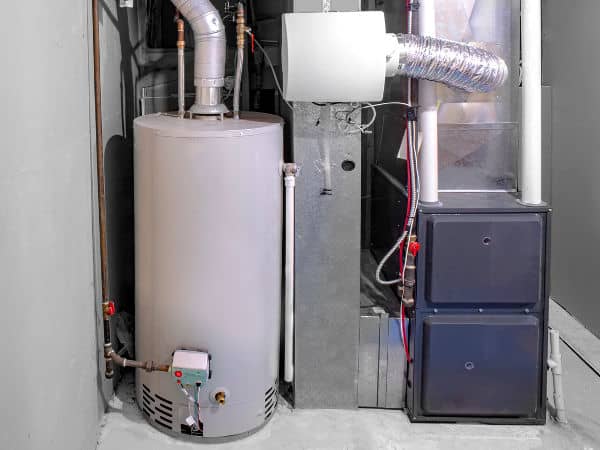How do you feel in regards to Water Heater Maintenance Tips You Can't Afford to Forget?

Hot water is vital for daily comfort, whether it's for a refreshing shower or cleaning recipes. To ensure your warm water system runs efficiently and lasts longer, normal maintenance is essential. This write-up provides functional tips and insights on exactly how to keep your home's hot water system to prevent disturbances and costly repair services.
Intro
Maintaining your home's hot water system could appear difficult, yet with a couple of easy steps, you can ensure it runs efficiently for years to find. This overview covers every little thing from understanding your hot water system to DIY maintenance ideas and recognizing when to call in expert assistance.
Relevance of Keeping Your Hot Water System
Regular maintenance not just expands the life-span of your warm water system but also ensures it runs effectively. Disregarding upkeep can lead to decreased efficiency, higher energy expenses, and also early failing of the system.
Indicators Your Warm Water System Needs Maintenance
Knowing when your hot water system needs interest can stop significant problems. Watch out for indicators such as irregular water temperature level, weird sounds from the heating system, or corroded water.
Purging the Hot Water Heater
Purging your hot water heater gets rid of debris build-up, boosting efficiency and prolonging its life.
Checking and Replacing Anode Rods
Anode rods prevent deterioration inside the container. Evaluating and changing them when broken is vital.
Complicated Problems Requiring Professional Help
Instances consist of significant leakages, electrical problems, or if your water heater is consistently underperforming.
Regular Specialist Upkeep Perks
Expert maintenance can include thorough examinations, tune-ups, and making certain conformity with security standards.
Inspecting and Readjusting Temperature Level Settings
Adjusting the temperature level setups makes sure optimal efficiency and security.
DIY Tips for Upkeep
You can execute a number of maintenance jobs on your own to keep your hot water system in leading condition.
Checking for Leakages
On a regular basis inspect pipelines and connections for leaks, as these can bring about water damages and higher costs.
Comprehending Your Hot Water System
Prior to diving into maintenance jobs, it's valuable to understand the standard elements of your warm water system. Normally, this includes the hot water heater itself, pipes, anode rods, and temperature level controls.
Monthly Upkeep Tasks
Routine monthly checks can assist catch small issues prior to they intensify.
Testing Stress Relief Valves
Checking the pressure safety valve ensures it operates correctly and protects against extreme stress accumulation.
Shielding Pipes
Shielding hot water pipelines reduces warm loss and can save energy.
When to Call a Specialist
While DIY upkeep is useful, some problems require expert expertise.
Final thought
Normal maintenance of your home's warm water system is necessary for efficiency, durability, and cost savings. By adhering to these pointers and knowing when to seek specialist help, you can guarantee a reliable supply of hot water without unforeseen disturbances.
How to Maintain an Instant Hot Water Heater
Before tinkering with your hot water heater, make sure that it’s not powered on. You also have to turn off the main circuit breaker and shut off the main gas line to prevent accidents. Also turn off the water valves connected to your unit to prevent water from flowing into and out of the appliance. 2. When you’re done, you have to detach the purge valves’ caps. These look like the letter “T†and are situated on either side of the water valves. Doing so will release any pressure that has accumulated inside the valves while at the same time avoid hot water from shooting out and burning your skin. 3. When the purge valves’ caps are removed, you have to connect your hosing lines to the valves. Your unit should have come with three hoses but if it didn’t, you can purchase these things from any hardware or home repair shops. You can also get them from retail stores that sell water heating systems. Read the user’s manual and follow it to complete this task properly. When the hosing lines are connected, open the purge port’s valves. 4. You should never use harsh chemical cleaners or solutions when cleaning your unit. Make use of white vinegar instead. It should be undiluted and you’ll probably use about 2 gallons. 5. Now flush your water heater. This task should probably take about 40 minutes. We can’t give you specific directions for this because the procedure is carried out depending on the type, model and brand of your heater. With that being said, refer to the user’s manual. 6. When you’re done draining the unit, you have to turn off the purge port valves again. Remove the hosing lines that you earlier installed on each of the water valves. Put the valve caps (purge port) back in their respective places and be very careful so as not to damage the rubber discs that are found inside these caps. 7. Now that everything’s back in place, check your user’s manual again to find out how to reactivate your water heating system. 8. Once it is working, turn one of your hot water faucets on just to let air pass through the heater’s water supply pipes. Leave the tap on until water flows smoothly out of it. https://www.orrplumbing.com/blog/2014/september/how-to-maintain-an-instant-hot-water-heater/

We had been introduced to that report about How to Maintain Your Water Heater & Prolong its Life from a pal on another web page. Do you know someone else who is curious about the subject? Take a moment to promote it. Thank you for taking the time to read it.
Information Here